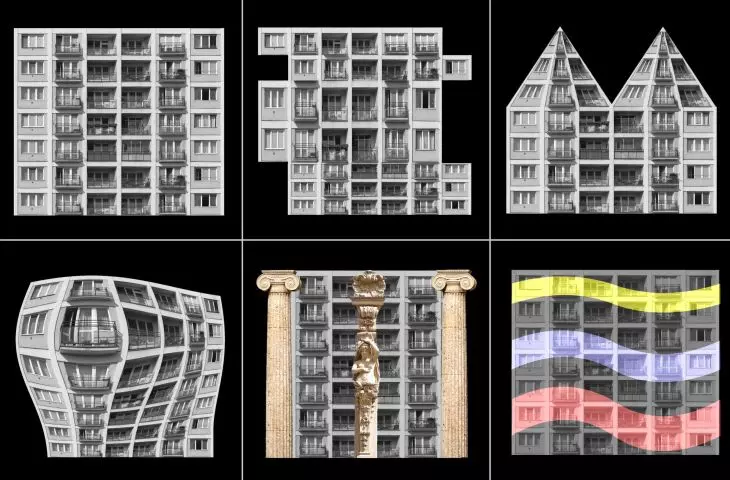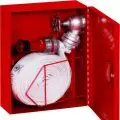In social media, but also in more serious news portals, native celebrities, i.e. people who are known for being famous, are constantly promoted and promoted. They shower us with photos of themselves on glamorous vacations and travels, in the interiors of their posed apartments and numerous events.
In the mutual jibes and pinches, as well as in the comments of Internet users, it is quite common to hear the allegation that these photos have been subjected to computer processing that distorts and, in fact, allegedly beautifies the beauty of celebrities and celebrities. It is fair to ask whether this is really a reprehensible procedure, especially since it has been used in architecture for a very long time. Since the Renaissance, created, drawn and painted architecture depicted an imaginary idyllic reality, never having a chance to exist in reality.
We admire such architecture in the frescoes of Raphael Santi (1483-1520) in the Stanza della Segnatura in the Vatican, or the Venetian canvases of Paolo Veronese (1528-1588). A different vision is presented in Baroque illusionist painting with the fresco Apotheosis of St. Ignatius by Andrea del Pozzo (1642-1709) in the Roman church of the same name, and in Poland the magnificent fresco by his pupil Jan Kuben (1697-1770) in the Church of the Elevation of the Holy Cross in Brzeg. We can admire non-existent romantic ancient ruins in the idealistic landscapes of French painter Claude Lorrain (1600-1682), or the engravings of Italian engraver Giovanni Piranesi (1720-1778). Imaginary architecture also runs through modern art such as in the futuristic visions of Antonio Sant'Elia (1888-1916), Le Corbusier 's modernist concepts of the Voisin plan or the drawings of Archigram.
In everyday architectural practice, drawn visions of created architecture were also supported by idealized figures from the world of fashion and luxury cars. It is enough to reach back to the architectural drawings of domestic artists from the 1970s to see a dream world that never had a chance to exist in the coarse communist Poland. Nowadays, the development of computer techniques has made it possible to create photorealistic visualizations, depicting the dreamed and dreamed world of objects realized in the future. One can notice the evolution of the staffage and graphic "tricks" used. Elegantly dressed people, expensive cars and similar exclusive props have given way to vines entwining buildings, green spaces conducive to recreation and leisurely people walking unhurriedly among the idyllic landscape. The autumn grays, winter smog, acres of concrete parking lots, aggressive graffiti or lingering garbage are not presented. They do not include the busy, lonely, sick, disabled people excluded from this idyllic dream reality.
We accuse celebrities of retouching their photos, but we are not annoyed that the visuals have so little to do with the reality around us. One can only see this phenomenon as a manifestation of commercialism, in which architects advertise their products to developers, who in turn advertise to clients who rent commercial space, or to potential property buyers. It's a Polish peculiarity that apartments are sold in buildings that are only just being built, and prospective customers can unpleasantly confront the actual shape and appearance of the building with its visualizations in a situation where they have long since purchased the property. Photographs of already completed developments are presented in professional magazines and portals in an equally deceptive manner. Carefully framed shots deliberately avoid photographing the surroundings and context of the erected buildings. Only real physical contact with the object negates the lack of this context, the haphazard location, causing disappointment in relation to the expected, familiar effect seen earlier in the photographs. This, by the way, is one of the more important elements distinguishing our contemporary architecture from the realizations in the Netherlands, France or Great Britain. In those realities, only direct contact with the object shows its qualities, while in our native case, unfortunately, it usually depreciates it. This "visualization" approach to architecture also distinguishes our way of educating future students of the profession from the leading Western universities. A similar syndrome can be observed in our architectural competitions, where visualizations are beginning to be more important than the structure and morphology of the object. Another problem is the abandonment of models playing an important role in the adjudication of foreign competitions, in favor of visualizations balancing on the verge of kitsch.
However, it is probably not only the commercial aspect that determines such a visualization approach, but the unfulfilled dreams and aspirations in our domestic realities. Perhaps in view of the gap between our dreams and the real effects of our creative work, we should reach, following the example of celebrities, for more serious retouching of photographs of our realizations and generate even more idealistic visualizations and images of our architecture.
However, these actions described above are only canvas, paper or virtual presentation, resistant and very patient to such treatments. But architecture is not photographs and visualizations, but the hard physical reality around us, the shape and functioning in space of which these graphic and computer treatments, which is perhaps a pity, have no influence.
aesthetic medicine
Computer-assisted beauty enhancement is a virtual procedure, functioning somewhere on the web and social media. In the real world, on the other hand, aesthetic medicine, which is an already invasive intervention in the human body, is becoming increasingly popular. In the celebrity world, wrinkle removal, Botox injections, facelifts and facial contouring, liposuction, lipolysis, i.e. liposuction, reshaping of the breasts, buttocks, thighs and even modeling of the entire figure have become fashionable.
In architecture, such manifestations of aesthetic medicine can be observed in the 19th century. An example was the restoration of Paris's Notre-Dame Cathedral by Eugène Viollet-le-Duc (1814-1879), in which the architect introduced a number of originally non-existent Gothic details that were the product of his imagination, including a fire-digested signature at the intersection of the naves. Similar activities, verging on the world of creating fairy-tale architecture, are presented by the realizations of 19th-century castles, headed by the utopian Bavarian Neuschwanstein, built by Ludwig II, and in Poland by the reconstruction of the Tiele-Winckler palace in Moszna near Opole, or the palace of Marianne of Orange in Kamieniec Ząbkowicki, built according to a design by Karl Friedrich Schinkel (1781-1841), which is a fairy-tale mixture of neo-Gothic with Moorish elements.
Recently, aesthetic medicine tourism has become increasingly popular, and clinics in Turkey have become the dominant destination. Following this trend, one would like to subject many of our buildings and structures to such treatments, more or less invasive. It would certainly be worthwhile to improve the proportions, and perhaps the silhouette, replace poor material, sublimate detail, refine the color scheme, and perhaps improve the function and interiors.
Retouching, aesthetic medicine
© Piotr Średniawa
Unfortunately, it is impossible to send a building from Poland to Turkey to improve its aesthetics and bring it back to the country. Attempts to ship squares and other public spaces would be even more problematic. That leaves only homegrown treatments. Aside from a few positive examples of revitalization or sanitation, most of the treatments to which we subject our buildings in the framework of architectural aesthetic medicine are not very successful. We have completely missed the opportunity to raise not only the aesthetics, but the functional standard of thermally retrofitted buildings. The proverbial pastelose has become synonymous with ugliness and bad taste. Just like the so-called modernization of yards, rightly referred to as concretosis. It's a pity about this wasted opportunity and not inconsiderable financial resources, especially since these treatments will haunt us for the next few decades. This shows that there are no unimportant topics and activities in our profession. It is enough to compare our achievements with award-winning Western European realizations.
Already more than 10 years ago, such comprehensive activities were undertaken in the former DDR in large-scale housing developments. Award-winning and published realizations were created in Halle and Leinefelde under the direction of Stefan Forster. Also, recent Mies van der Rohe prizes have been awarded, for revitalizing apartment blocks. In 2017, the prize went to a project to revitalize modernist housing in Amsterdam by NL architects and XVW architectuur, and in 2019, a redevelopment of 1960s apartment blocks in Bordeaux by Lacaton & Vassal architectes, winners of the 2021 Pritzker Prize, Frédéric Druot Architecture and Christophe Hutin Architecture.
winter landscape
Usually, when I drive to Krakow from Katowice or Gliwice, I use the A4 highway, which, while scenically nice, runs obviously outside the cities and villages. Sometimes, however, having an errand to run on the way in Sosnowiec or Będzin, I choose to go through Olkusz. From Olkusz, the four-lane road turns into an old two-lane road leading through villages near Krakow, stretched along almost the entire route. It's the usual Polish landscape of streetscapes of dubious beauty, mottled roofs with different angles, houses of poor proportions, surrounded by metal fences of dubious beauty, interspersed with one-story pseudo-modern and really bland pavilions. Nothing is left of the blue wooden cottages, woven barns and rails of wooden fences I remember from my childhood. Nothing can surprise me on this trip in a positive or negative way. However, one January morning I saw a very different landscape that left me amazed bordering on awe. At night, fresh snow covered entire villages with white "paint," and on a cloudy day, the only colorful accents were the passing bodies of cars. All the mottling of the buildings disappeared, turning into a monochromatic graphic, interspersed with a delicate drawing of leafless trees. Uniform white roofs calmed the unbearable mélange, melding the buildings with the hills of the background. In a couple of night hours, winter turned the cacophonous image into a panorama full of harmony. As if from Japanese woodcuts, this minimalist view showed, as in a daydream, a whole new perspective, in snowy camouflage. The mirage, like any illusion, does not last forever, and the greater the disappointment when it disappears from our eyes. Unfortunately, the delight was only temporary, because returning along this route after a few hours to Silesia, the snow melted and the image of the passing villages returned to the old, familiar but hardly positive view.
What a pity that we don't have the means, like nature itself, to change the image of our space in such a way overnight. However, modeling ourselves on nature, perhaps we don't need to resort to computer manipulations that idealize our space. If we were to gradually improve even on a small scale our villages and towns, perhaps not as magically as one winter night, we would manage to make at least some positive changes to our cluttered urban landscape. Maybe, instead of mastering yet another graphics program and creating iced sweet visualizations, it's worth stopping for a moment and seeing the beauty of the landscape in a fresh way and dreaming like the historical painters of ideal architecture and space.
Piotr Średniawa
Chairman of the Council of the Silesian Chamber of Architects,
Member of WKUA and MKUA in Katowice,
Since 2003 he has been running the Office of Studies and Projects in Gliwice with Barbara Średniawa

















